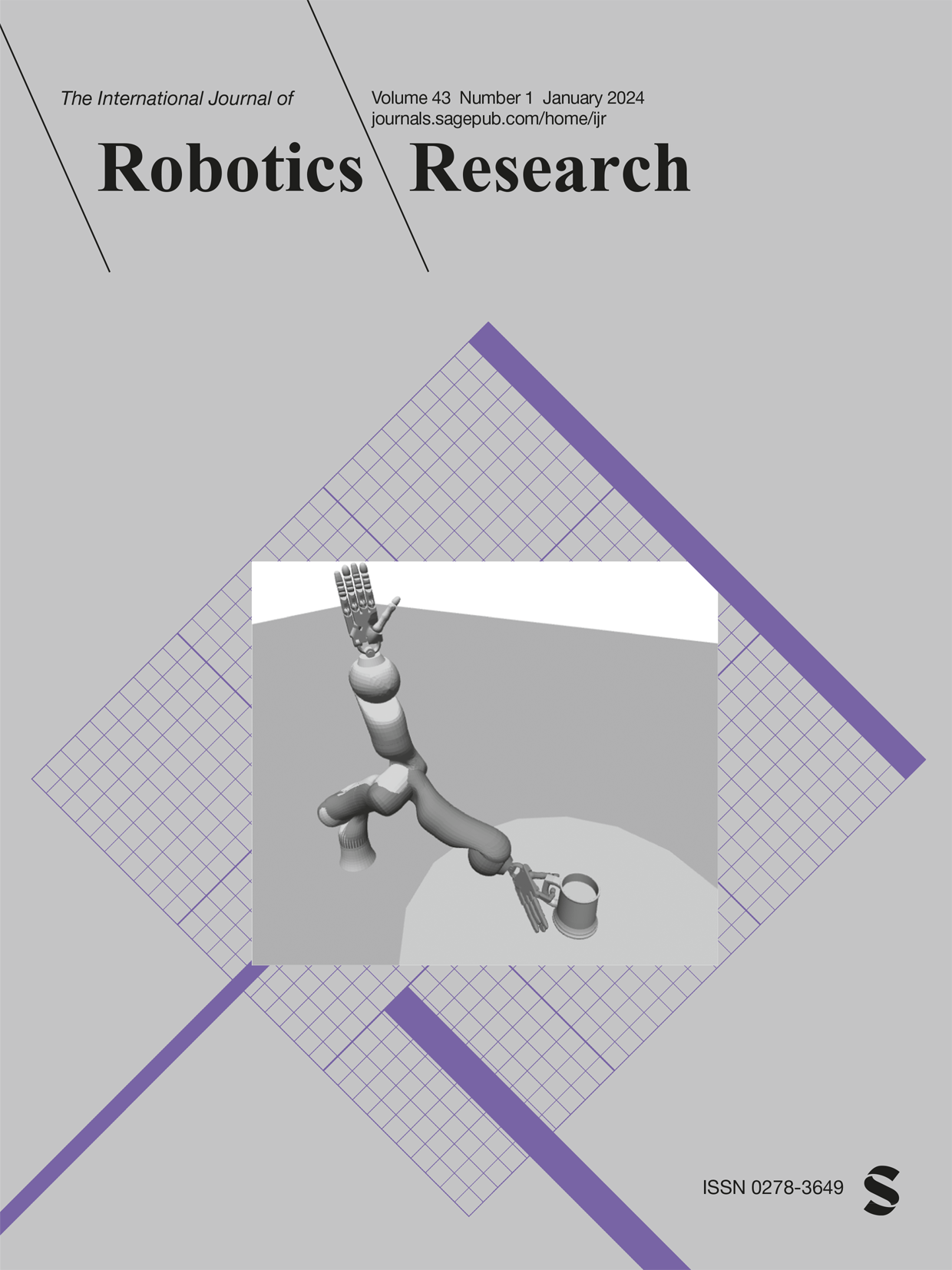体波频率调制提高侧绕机器人性能
IF 7.5
1区 计算机科学
Q1 ROBOTICS
引用次数: 14
摘要
侧绕是由某些蛇执行的一种运动形式,已在无肢机器人中重建;步态是有益的,因为它在不同的陆地环境中是有效的。侧旋步态是由身体起伏的水平和垂直行波协调产生的:水平波在很大程度上决定了侧旋相对于身体框架的方向,而垂直行波在很大程度上将决定了身体与环境之间的接触模式。当运动的质心离开由接触模式形成的支撑多边形时,可能会发生不希望的运动行为(如身体不必要的转动或不稳定的振荡)。在本文中,我们开发了一种通过调制垂直波来产生所需平移和转向的方法。这些调节改变了身体-环境接触贴片的分布,并可以稳定以前静态不稳定的配置。该方法首先识别垂直波的空间频率,该频率对于给定的水平波静态稳定运动。然后,使用几何力学工具,我们设计体波之间的协调,以产生所需的平移或旋转。我们在数值模拟和16关节无肢机器人在平坦坚硬地面上运动的实验中证明了我们技术的有效性。我们的方案扩大了侧绕机车在低速下可以进行的运动和行为的范围,这可以导致无肢系统能够稳定和/或快速穿越不同的地形。本文章由计算机程序翻译,如有差异,请以英文原文为准。
Frequency modulation of body waves to improve performance of sidewinding robots
Sidewinding is a form of locomotion executed by certain snakes and has been reconstructed in limbless robots; the gait is beneficial because it is effective in diverse terrestrial environments. Sidewinding gaits are generated by coordination of horizontal and vertical traveling waves of body undulation: the horizontal wave largely sets the direction of sidewinding with respect to the body frame while the vertical traveling wave largely determines the contact pattern between the body and the environment. When the locomotor’s center of mass leaves the supporting polygon formed by the contact pattern, undesirable locomotor behaviors (such as unwanted turning or unstable oscillation of the body) can occur. In this article, we develop an approach to generate desired translation and turning by modulating the vertical wave. These modulations alter the distribution of body–environment contact patches and can stabilize configurations that were previously statically unstable. The approach first identifies the spatial frequency of the vertical wave that statically stabilizes the locomotor for a given horizontal wave. Then, using geometric mechanics tools, we design the coordination between body waves that produces the desired translation or rotation. We demonstrate the effectiveness of our technique in numerical simulations and on experiments with a 16-joint limbless robot locomoting on flat hard ground. Our scheme broadens the range of movements and behaviors accessible to sidewinding locomotors at low speeds, which can lead to limbless systems capable of traversing diverse terrain stably and/or rapidly.
求助全文
通过发布文献求助,成功后即可免费获取论文全文。
去求助
来源期刊
CiteScore
22.20
自引率
0.00%
发文量
34
审稿时长
6-12 weeks
期刊介绍:
The International Journal of Robotics Research (IJRR) has been a leading peer-reviewed publication in the field for over two decades. It holds the distinction of being the first scholarly journal dedicated to robotics research.
IJRR presents cutting-edge and thought-provoking original research papers, articles, and reviews that delve into groundbreaking trends, technical advancements, and theoretical developments in robotics. Renowned scholars and practitioners contribute to its content, offering their expertise and insights. This journal covers a wide range of topics, going beyond narrow technical advancements to encompass various aspects of robotics.
The primary aim of IJRR is to publish work that has lasting value for the scientific and technological advancement of the field. Only original, robust, and practical research that can serve as a foundation for further progress is considered for publication. The focus is on producing content that will remain valuable and relevant over time.
In summary, IJRR stands as a prestigious publication that drives innovation and knowledge in robotics research.

 求助内容:
求助内容: 应助结果提醒方式:
应助结果提醒方式:


